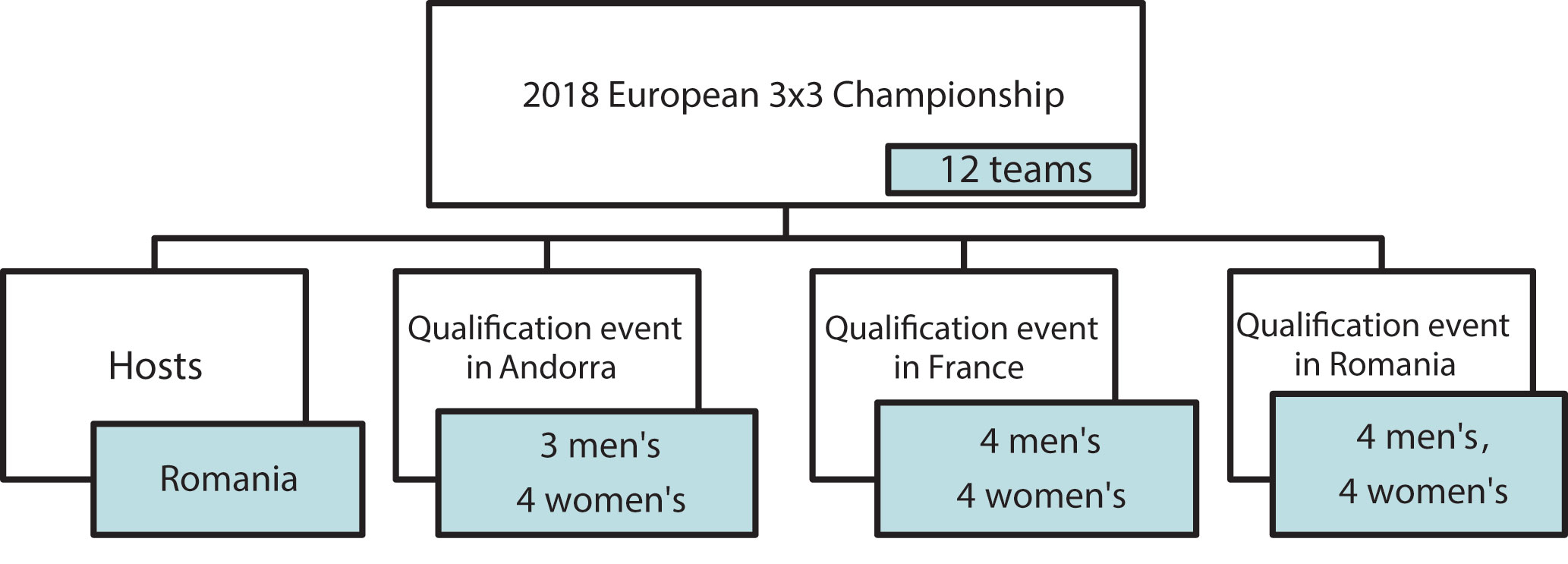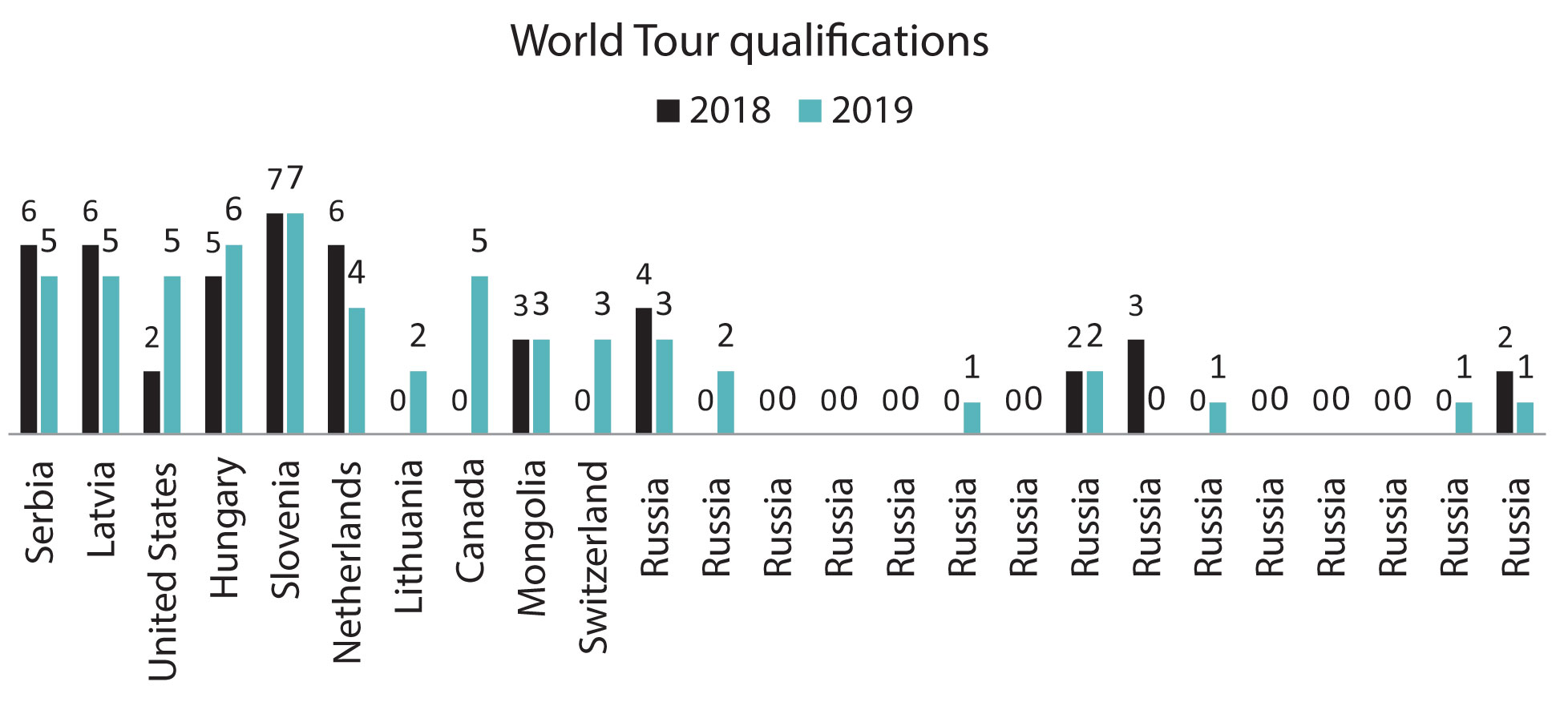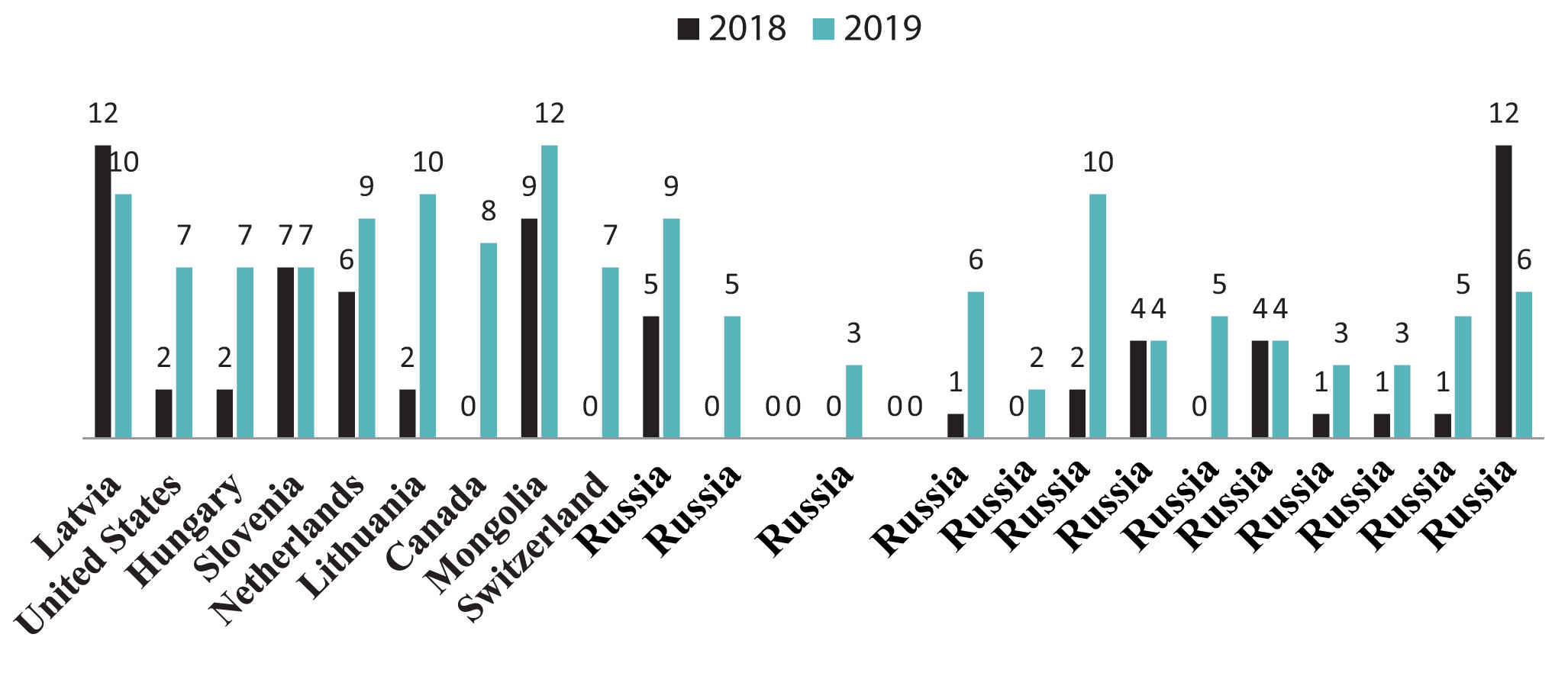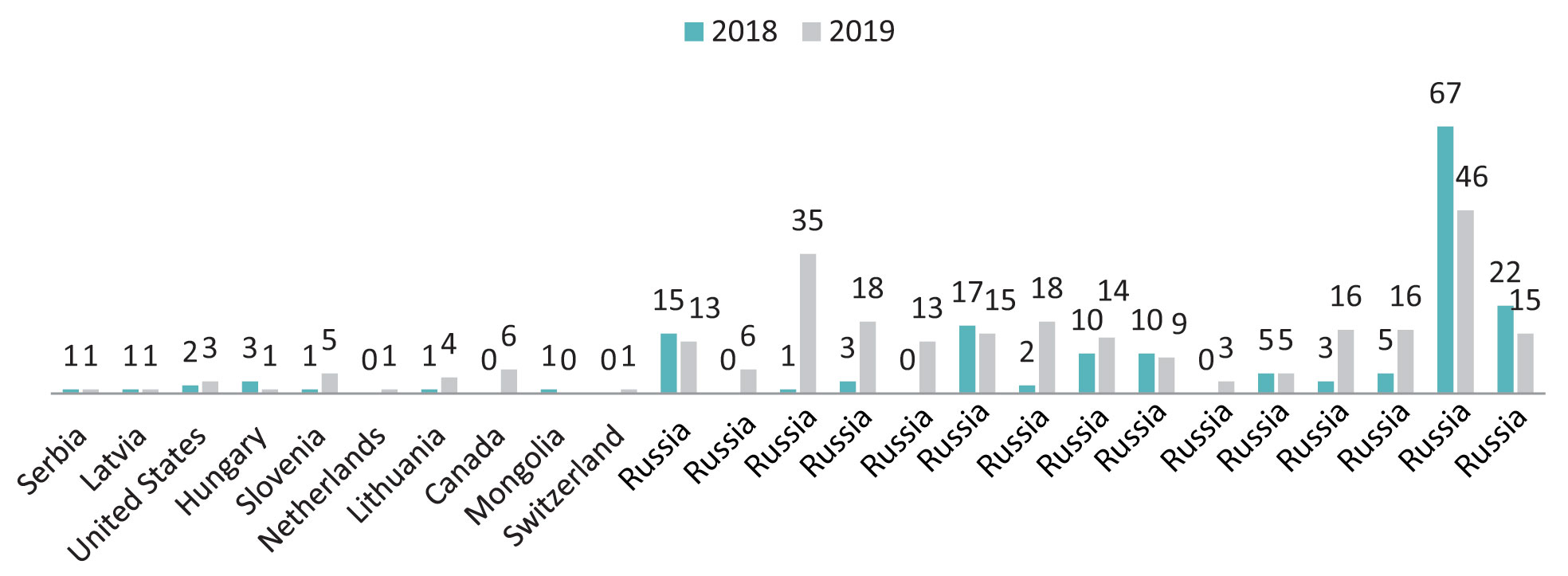3X3 basketball at Tokyo 2020 Olympics: competition organization model
ˑ:
Postgraduate student M.S. Zarubina1, 2
Dr.Hab., Professor L.B. Andryushchenko3
Associate Professor Yu.O. Averyasova3
PhD, Senior researcher, Associate Professor Valentina Ginevičienė4
PhD, Associate Professor I.V. Organ5
1University of Dubna, Dubna, Moscow Region
2Russian State University of Physical Education, Sport, Youth and Tourism (SCOLIPE), Moscow
3 Plekhanov Russian University of Economics, Moscow
4 Department of Human and Medical Genetics, Institute of biomedical science, Faculty of Medicine, Vilnius Universit
5Volgograd State Academy of Physical Education, Volgograd
Keywords: 3x3 basketball, competitive activity (CA), 2020 Olympic Games in Tokyo.
Background. Analyses of the theoretical and practical study reports with concern to the 3x3 basketball progress demonstrate the need for a standard competitive progress model [1, 10-12]. The FIBA website [3] offers recommendations of analysts from the Netherlands [2] on how the modern 3x3 basketball competitions should be promoted including: actions to lure elite basketball players from the traditional 5x5 format to 3x3 basketball; 3x3 basketball development programs; mass national competitions in this sport discipline; efforts to train high-skilled basketball players for the 3x3 competitions etc. Therefore, presently the FIBA [7] offers no practical guidelines for the 3x3 basketball competitive formats; and every country has to develop its own competitive progress model for rating events and qualifications.
Objective of the study was to analyze the most effective competitive progress models for ratings and qualifications in the modern 3х3 basketball.
Results and discussion. Presently the 3x3 basketball competitions are classified as follows: mass tournaments; club team competitions; and competitions of national teams. Mass 3x3 basketball tournaments are open for everyone as provided by the valid Statute of Competitions, and are normally timed to the municipal festivals and other public events. Club team competitions is the competitive format for highly skilled athletes with their qualifications for the FIBA World Tour, a top-ranking club event [9] that was run for the 8th time in 2019. The tournament includes a few qualifications and a final, with 12 teams selected on special conditions for every qualification event. And the national team competitions may be defined as the top-ranking international events including: continental championships; World Championship; and Olympic Games. A detailed analysis of the modern competitive formats shows that a special qualification system is being used for the national teams’ qualifications for the European Championships [2], World Championships [3], and Olympic Games [4]. Thus every European national federation could compete in the qualification events in Andorra, France and Romania for the 2018 European Championship (Figure 1). As a result, 12 teams successfully qualified for the 2018 European Championship [2].

Figure 1. Qualification system for the 2018 European Championship
World Championship titles are contested by 20 men’s and 20 women’s teams qualified based on their rating points. National ratings include 2 components: rating points scored by the individual top players in the top-ranking events; and the points scored in the rating events hosted by the country. Competing in the 3x3 tournaments of the 2020 Olympic Games will be 8 men's and 8 women's teams [4]; with four teams qualified based on the world ranking list as of November 1, 2019; and the other teams qualified via the qualification events (see Figure 2).

Figure 2. Qualification system for the 2020 Olympics in Tokyo
Therefore, the national Federation should take special efforts to run 3x3 basketball events, step up their popularity and secure inflow of top-professional players for qualifications for the 2020 Olympics. Many countries host tournaments of different levels this year, with the numbers of competitive 3x3 events reported to grow in 2019 versus 2018 (Figure 3) as follows: professional 3x3 competitions has grown by 20%; and qualifications for the professional 3x3 competitions and national competitions have grown by 39% and 30%, respectively. This means that the national federations are increasingly active in the rating events to qualify for the Olympic Games.

Figure 3. 2018-2019 statistics of the 3x3 basketball tournaments
It should be mentioned that the individual competitive activity of the leading 3x3 Russian players is still lower than in many other countries, particularly in the World Tour qualifiers and Challenger qualifiers that yield the highest rating points (Figures 4, 5).

Figure 4. National qualifications for the 2018-2019 World Tours

Figure 5. National statistics of 2018-2019 Challenger qualifiers
No wonder that the Russian 3x3 elite still needs to accumulate competitive experiences in the top-ranking events. Further analysis has shown that national tournaments make it possible to collect the necessary rating points and gain high competitive experiences: see Figure 6.

Figure 6. National 3x3 tournaments in 2018-2019
Conclusion. The competitive progress models for the Russian 3x3 basketball elite need to secure a broader participation in the foreign top-ranking events otherwise the players have to intensely compete in the lower-ranking events draining their resources and still having little if any top-level competitive experiences for success in the top-ranking tournaments.
References
- Averyasova Yu.O., Filimonova S.I., Andryushchenko L.B., Andryushchenko O.N (2018) Sport reserve training system optimization in elite basketball. Theory and Practice of Physical Culture. 6. pp. 27-30.
- FIBA 3x3 [Online] Available at: http://www.fiba.basketball/3x3 / accessed 10/10/2019
- FIBA 3x3 Europecup 2018 [Online] Available at: http://www.fiba.basketball/3x3europecup/2018/how-to-qualify/ accessed 10/10/2019
- FIBA 3x3 WC 2018 [Online] Available at: http://www.fiba.basketball/3x3wc /доступ 10/10/2019 https://fiba3x3.basketball/en/documents.html#olympics/доступ 10/10/2019
- FIBA 3x3 [Online] Available at: https://fiba3x3.com/доступ 10/10/2019
- FIBA 3x3 documents [Online] Available at: https://fiba3x3.com/docs/case-study-netherlands-and-3x3.pdf/доступ 10/10/2019
- FIBA 3x3 documents [Online] Available at: https://fiba3x3.com/en/documents.html#federations/доступ10/10/2019
- FIBA 3x3 events [Online] Available at https://play.fiba3x3.com/events?show=upcoming/доступ 10/10/2019
- FIBA 3x3 World Tour 2018 [Online] Available at https://worldtour.fiba3x3.basketball/2019/доступ 10/10/2019
- Ionela Cristina (2014) 3 on 3 basketball – facts and perspective. Vol. VI no. 2, р. 179-183.
- Koh K.T., John W., Mallett C. (2011) Discriminating factors between successful and unsuccessful teams: A case study in elite youth Olympic basketball games. J Quant Anal Sport, 7(3) [Google Scholar]
- Marián Hrabovský (2019) Management and marketing of selected 3x3 basketball events, Obor Management sportu, Brno
- Montgomery P.G., Maloney B.D. (2018) Three-by-Three basketball: Inertial movement and physiological demands during elite games. International Journal of Sports Physiology and Performance, Volume 13, Issue 9, pp. 1169-1174.
- Russiabasket [Online] Available at: https://russiabasket.ru/ accessed 10/10/2019
Corresponding author: maria7zarubina@gmail.com
Abstract
Objective of the study was to analyze the most effective competitive progress models for ratings and qualifications in the modern 3х3 basketball.
Methods and structure of the study. During the study the following methods were applied: analysis, synthesis of video recordings of the basketball games and static protocols in 3x3 Basketball World Championships of 2018 and 2019 (96 games), European Championships of 2017, 2018, and 2020 (96 games), Russian Championships of 2018, 2019, and 2020 (249 games), World Tour stages of 2017, 2018 and 2019 (589 games); simulation method.
Results and conclusions. The study of the models of organization of 3x3 basketball competitions at the international and national levels enabled to elaborate recommendations on the development of a national effective model of competitive activity: it is advisable to differentiate the work of the federations into two areas: professional and mass. To ensure high rating points and competitive experience at the international level club teams are to participate in 80% of competitions organized by FIBA (3x3 World Tour and 3x3 World Tour Qualifiers) and in other competitions - participation for the Russian national team and in national tournaments of the Russian Basketball Federation, intensify the work on the system for organizing and holding international competitions of the World Tour and World Tour Qualifiers. To attract new players in 3x3 basketball it is advisable to hold national competitions on the basis of the classical basketball model: Russian championships for different age groups, regional and municipal competitions; use reserve opportunities: organize prestigious tournaments during the off-season of classical basketball (May-September).
The findings emphasize the importance of advanced trainings of physical education and sports specialists in the field of information technology, digital services and technologies. The article presents the analysis of the modern system for organizing and holding 3x3 basketball competitions. We identified the peculiarities of participation of national teams in competitions of different levels and elaborated recommendations on optimization of 3x3 basketball development aimed to raise the federation’s world ranking.


